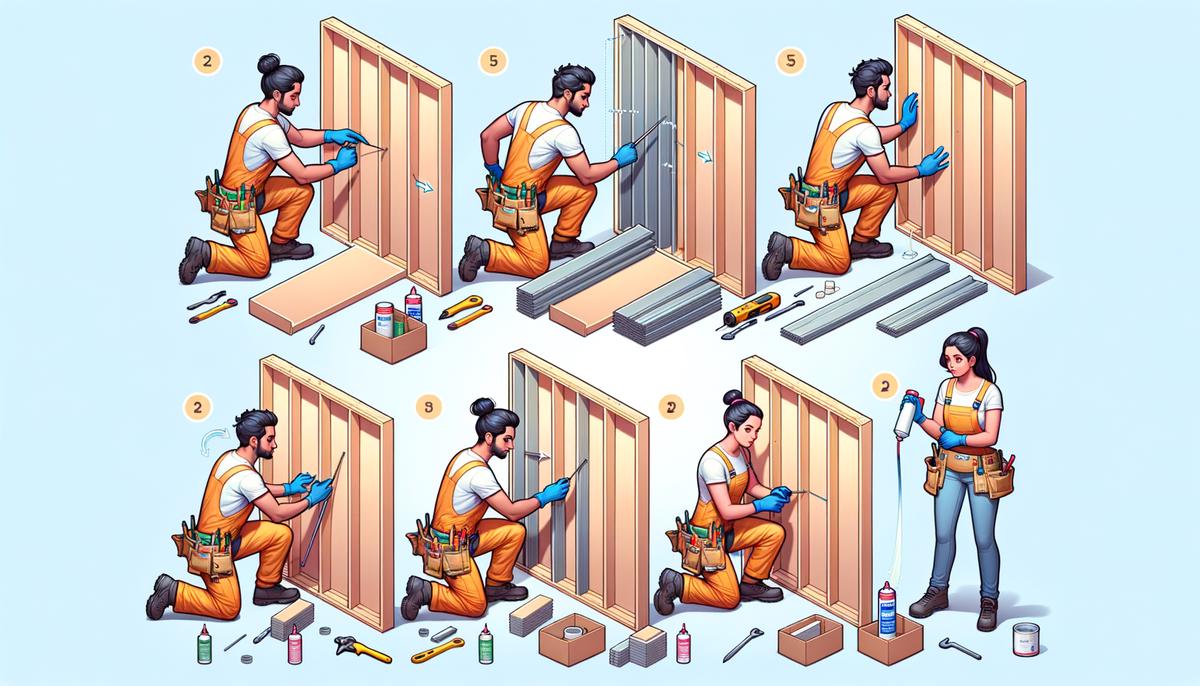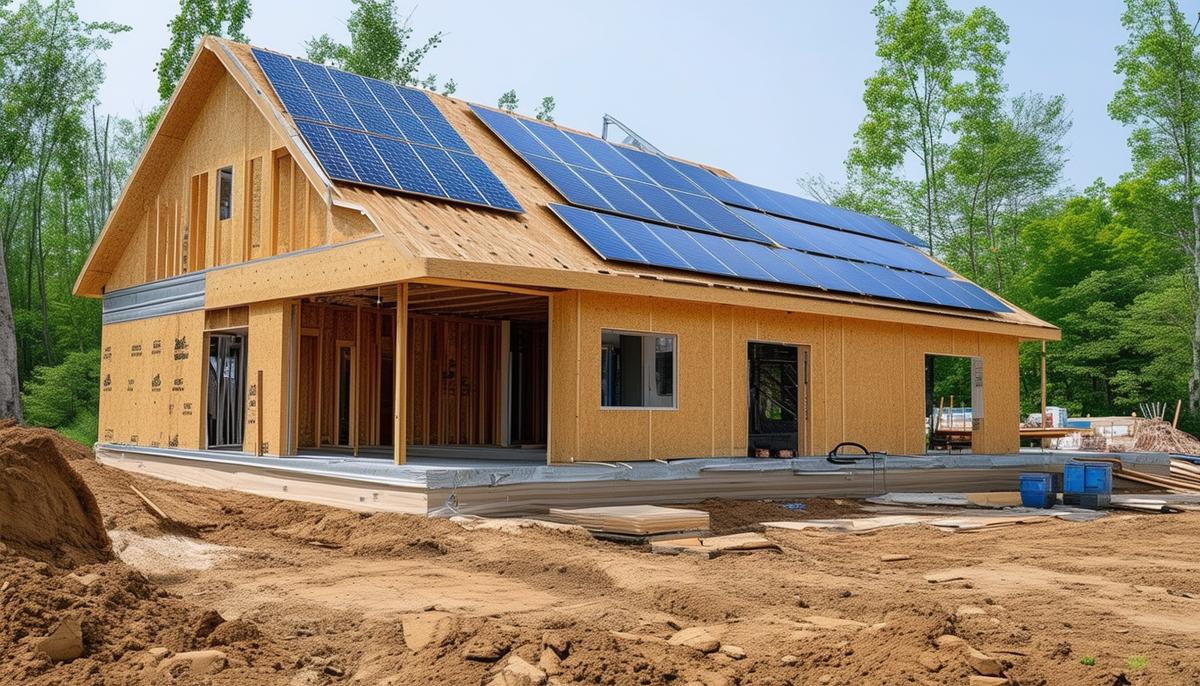Structural Insulated Panels (SIPs) offer an efficient, strong, and sustainable approach to building. These panels streamline construction while providing superior insulation and structural integrity. Understanding the benefits and challenges of SIPs can help you make informed decisions for your next building project.
Introduction to SIPs
Structural Insulated Panels (SIPs) are high-performance building materials consisting of an insulating foam core sandwiched between two structural facings, typically made of oriented strand board (OSB). They're manufactured in a factory and can be made to fit nearly any building design, providing excellent strength, energy efficiency, and rapid construction.
Energy Efficiency
SIPs offer excellent insulation. The foam core, often made of expanded polystyrene (EPS) or polyurethane (PUR), significantly reduces energy consumption. Studies have shown that a SIP building envelope can cut energy use by about 50%.
Quick Installation
SIPs arrive on-site ready to install, which can cut construction time significantly. This pre-fabrication can reduce onsite work by about 30 days for an average house, saving both time and money.
Structural Strength
These panels provide robust structural support comparable to traditional timber, without the bulk. This allows for more design flexibility in your layout. SIPs can be used for walls, floors, and even roofs, capable of handling snow loads and strong winds.
Design Flexibility
SIPs can be cut to almost any size and shape in the factory before they reach the job site. However, excessive curves or unique angles can increase costs and complexity.
Cost Implications
While SIPs may have a higher upfront cost compared to traditional methods, they often lead to savings during construction and operation. Less waste, fewer workers, and quicker build times contribute to cost efficiency.
Challenges to Consider
- SIPs can degrade if exposed to moisture
- Their airtight nature requires a good ventilation system to prevent issues like mold
- Making changes post-installation can be difficult
- Finding experienced contractors might be challenging in some areas
Sustainability and Eco-Friendliness
SIPs use less wood than traditional methods, reducing the need for extensive logging. The energy savings from their excellent insulation also mean fewer CO2 emissions. When kept dry and installed correctly, SIPs can last for about 60 years.

Types of Insulation in SIPs
The insulation type in SIPs significantly affects their performance. Here are the main options:
- Expanded Polystyrene Rigid Foam (EPS): Cost-effective with an R-value of about 3.6 per inch. It's a solid, dependable choice that balances performance and affordability.
- Polyurethane (PUR) Foam: Offers an R-value of about 6.8 per inch, almost doubling the performance of EPS. This efficiency allows for better insulation with thinner walls or more living space with the same level of warmth. However, it comes at a higher price.
- Extruded Polystyrene (XPS): Has an R-value of around 5 per inch and is moisture-resistant, making it suitable for damp conditions. It's less commonly used in SIPs than EPS or PUR.
- Polyisocyanurate (PIR): Similar to PUR but offers a slightly higher R-value, often ranging from 6.5 to 7 per inch. Like PUR, it's great for efficiency but more expensive.
When choosing insulation, consider your budget, climate, and long-term goals for your home. PUR might be best if energy efficiency is your top priority, while EPS is a solid choice for balancing performance and cost.
Joining and Installing SIPs
Joining and installing SIPs is crucial for the structural integrity and energy efficiency of your building. The process involves using splines to connect panels, cutting openings for windows and doors, and ensuring airtight seals.
SIPs are joined using either surface splines or block splines. Surface splines are thinner and placed along the outer edges of the OSB facings, while block splines are thicker and fit within the foam core. The choice often depends on the specific design and load requirements of the building.
Cutting openings for windows and doors happens on-site, allowing for last-minute adjustments. Specialized saws are used to cut through the OSB and foam layers. Precise measurements are crucial, as SIPs don't allow for easy corrections.
When joining panels, adhesive or sealant is applied along the edges before sliding them onto the spline. This creates an airtight bond, enhancing thermal efficiency. Panels are then aligned precisely and secured with screws, nailing plates, or brackets as specified.
It's important to protect SIPs from moisture during installation. Exposure to rain or high humidity for extended periods can compromise their longevity.
Proper installation ensures you get the most out of your SIPs, from energy efficiency to structural resilience. With careful attention to detail, building with SIPs can be both efficient and satisfying.

Costs and Savings with SIPs
Building with Structural Insulated Panels (SIPs) involves higher upfront costs compared to traditional framing, but offers significant long-term savings. Here's how:
- Labor costs: SIPs come pre-made, reducing construction time by up to half. This means fewer days on-site and lower labor expenses.
- Construction time: SIP builds average 65 days compared to 95 for stick framing. At $500-$800 per day, this could save $15,000-$24,000.
- Reduced waste: Factory-cut SIPs produce minimal on-site waste, lowering disposal costs.
- Energy savings: SIPs' high insulation and airtight construction significantly reduce heating and cooling demands. Some homeowners have saved over $14,000 in ten years due to 50% higher energy efficiency.
- HVAC savings: Better insulation may allow for smaller, less expensive HVAC systems.
- Tax incentives: Many areas offer rebates or deductions for energy-efficient construction.
While SIPs require a higher initial investment, their long-term benefits in reduced labor, faster construction, less waste, and substantial energy savings make them a cost-effective choice for efficient, high-performance buildings.
Advantages and Disadvantages
Advantages:
- Quick Assembly: SIPs are pre-fabricated, significantly reducing on-site labor and construction time.
- Structural Strength: The foam core sandwiched between OSB creates panels stronger than traditional framing, allowing for more open spaces.
- High Insulation Value: SIPs provide exceptional insulation, creating an airtight envelope that can cut heating and cooling costs by up to 50%.
- Minimal Thermal Bridging: The continuous foam core reduces heat escape, improving overall insulation.
- Climate Adaptability: SIPs perform well in both hot and cold climates, maintaining interior comfort year-round.
Challenges:
- Moisture Susceptibility: SIPs can degrade when exposed to prolonged moisture, requiring careful moisture management during and after construction.
- Limited Design Flexibility: Complex curves or unusual angles can be difficult to achieve with pre-fabricated panels.
- Ventilation Needs: The airtight seal requires a good ventilation system to maintain air quality and prevent mold growth.
- Pest Control: The foam core can attract pests, necessitating proper treatment and regular inspections.
- Contractor Availability: Finding experienced SIP installers can be challenging in some areas.
Understanding these factors helps in deciding if SIPs are the right choice for your project. With proper planning and the right team, SIPs can provide an efficient, strong, and comfortable building.
SIPs and Sustainability
SIPs offer several sustainability benefits:
- Energy Efficiency: Their high insulation value and airtight construction significantly reduce operational energy use, lowering a home's environmental footprint.
- Resource Conservation: SIPs use less lumber and utilize fast-growing, small-diameter trees for OSB facings, reducing strain on old-growth forests.
- Reduced Water Pollution: Less wood harvesting means less contamination from logging and processing chemicals.
- Waste Reduction: Factory precision-cutting reduces material waste by about 30% compared to on-site cutting. Many manufacturers also recycle scrap foam and OSB.
- Durability: SIP-built homes better withstand extreme weather, increasing long-term resilience.
- Renewable Energy Compatibility: The high energy efficiency of SIPs complements renewable energy systems, potentially achieving net-zero energy status.
By lowering carbon footprints, reducing reliance on non-renewable energy, and minimizing environmental impact in both construction and operation, SIPs actively contribute to a more sustainable future in building practices.

SIPs offer an efficient and sustainable building option. Their energy-saving properties, quick construction time, and structural strength make them valuable for modern construction. With proper planning, SIPs can help create comfortable, eco-friendly homes.
